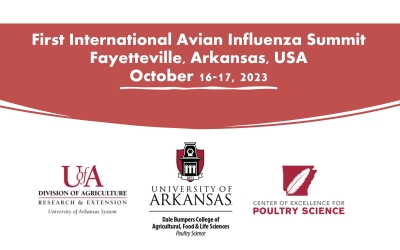Microbial assessment of poultry farm biosecurity
Authors: Morgan Farnell and Lindsey Wythe
GMPC TOP
2023.
vol. 3, Iss. 1
pp:0-23
Doi: https://doi.org/10.51585/gtop.2023.1.0026

Abstract:
Biosecurity may be defined as protection from pathogens or disease. This may include the separation of the flock from living vectors or inanimate objects called fomites. While prevention of host-specific and zoonotic diseases is important, the commercial poultry industry is already preoccupied with the challenges of day-to-day operations. The purpose of this project was to illustrate how surfaces that may seem clean are heavily contaminated with microorganisms that may be responsible for human and avian diseases. We also evaluated three common intervention strategies, including disposable boot covers, foot baths, and tire disinfection. Poultry environmental samples were collected at the Texas A\&M University Poultry Science Research Center, including fan shrouds, side air inlets, cool cell reservoirs, truck tires, truck floor mats, doorknobs, controller panels, a bioaerosol air sampler, and an impactor air sampler. A total of 30 samples were collected per sample type, which was homogenized, serially diluted, and spread plated onto agar media to culture total aerobes, Staphylococci, and coliform bacteria. 6.6 log10 colony-forming units cfu/cm2 of aerobic bacteria were found at the greatest concentration, followed by Staphylococci (5.6 log10 colony-forming units cfu/cm2) and coliforms (2 log10 colony-forming units cfu/cm2). This pattern was observed in most of the samples. Boot covers, foot baths, and tire disinfection were tested for efficacy. While disposable boot covers significantly reduced the number of aerobes, Staphylococci, and coliforms, as many as 300 microorganisms per cm2 still made it through to the inner boot cover. Disinfectants are commonly misused due to not properly clearing the surface prior to application or allowing the proper contact time. We found that while disinfection significantly reduced these indicator organisms, that reductions were only 10 to 100-fold, leaving many viable bacteria behind. Increased contact time from 3 seconds to 10 minutes resulted in significant reductions of aerobes and Staphylococcus. The tire wash data mirrored our foot bath data. Data was shared from previous laboratory and field trials. Less than 1% sterile poultry litter significantly reduced disinfectant efficacy across four product categories. Extended storage time of 30 weeks reduced product efficacy as well. We shared electron micrographs to illustrate how visually clean and smooth surfaces provide many hiding places for microbes, reducing disinfectant efficacy. While risk can never be reduced to zero, it may be reduced and controlled with good management practices. Cleaning and disinfection should follow a five-step process of dry cleaning, soap wash, rinse, drying, and finally disinfection. Labels should be read closely so that the product is used safely and effectively. While there are many viable products on the market, disinfecting a clean surface and following recommendations for contact time are very important to get the best results. Following best management practices such as reducing pest (insect/rodent) harborage and following your integrated pest management program will help reduce risk significantly.
Keywords:
Influenza, Biosecurity, Disinfection, Indicator organisms, Staphylococci, Coliforms, Bacterial counts, Colony-forming units
Statistics:
Article Views: 1107
PDF Download: 9